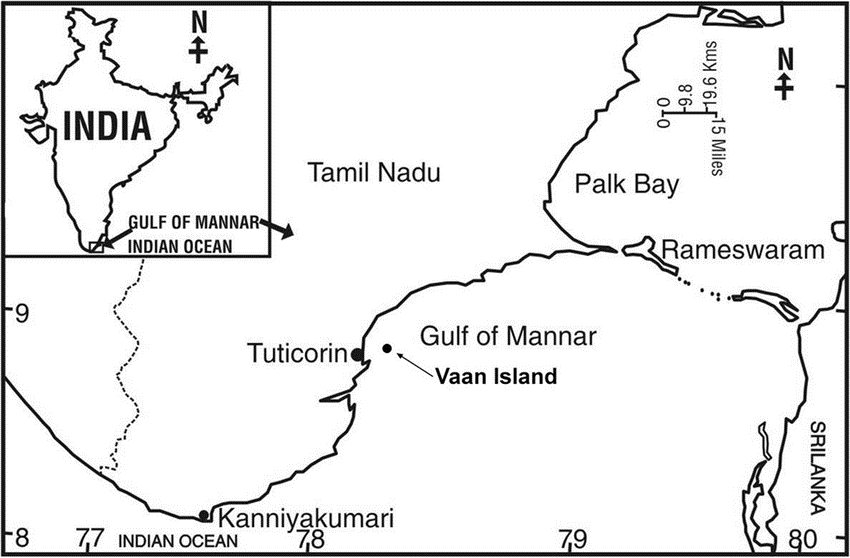PREVIOUS
Coral blooms in the Gulf of Mannar
August 22 , 2025
17 hrs 0 min
54
0
- Coral reefs in the Gulf of Mannar have been severely damaged by climate change and human activities like coral mining since the 1960s.
- The Scientists from Suganthi Devadason Marine Research Institute (SDMRI) and Tamil Nadu Forest Department have conducted annual underwater coral restoration surveys for over 20 years.
- A total of 51,183 coral fragments from 20 species were transplanted onto 5,550 artificial substrates.
- It restored about 40,000 sq. m. of degraded reef area.
- Survival rates of transplanted corals ranged from 55.6% to 79.5%.
- Acropora intermedia showing the highest survival (89.1%) and growth rate (16.7 cm/year) after five years.
- Between 2015 and 2019, 10,600 artificial reef modules (triangular artificial reef - TAR and perforated trapezoidal artificial reef - PTAR) were deployed.
- It is increasing coral recruit density from 1.23 in 2004 to 76.01 in 2020 on PTARs.
- Live coral cover at restored sites increased from 2.7% in 2006 to 18.8% in 2020, compared to only 1.8% at unrestored sites.
- Fish density rose dramatically from 14.5 in 2006 to 310.0 in 2020 at restored sites.
- They support 63 fish species in Vaan Island and 51 species in Koswari Island.
- The Tamil Nadu government launched the Tamil Nadu Sustainably Harnessing Ocean Resources (TNSHORE) project to deploy 8,500 artificial reef modules and restore degraded coral reefs and seagrass beds.

Leave a Reply
Your Comment is awaiting moderation.


